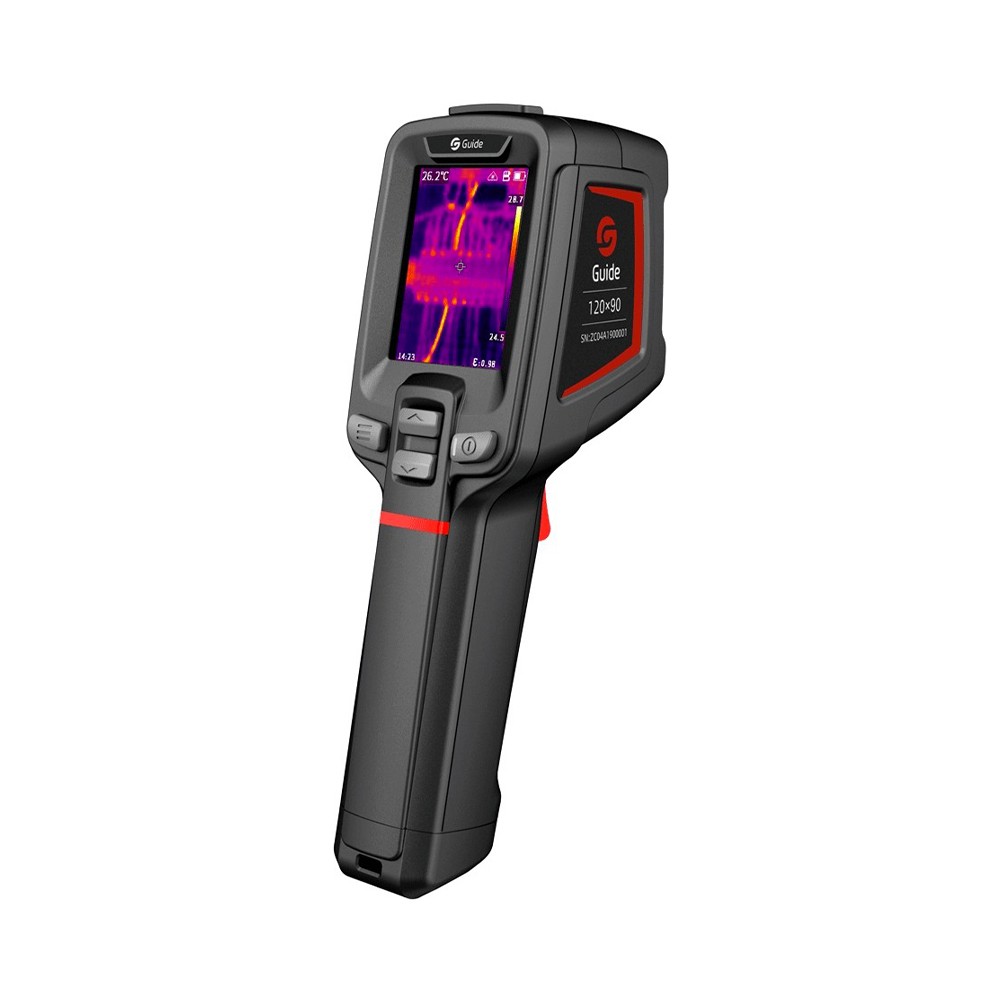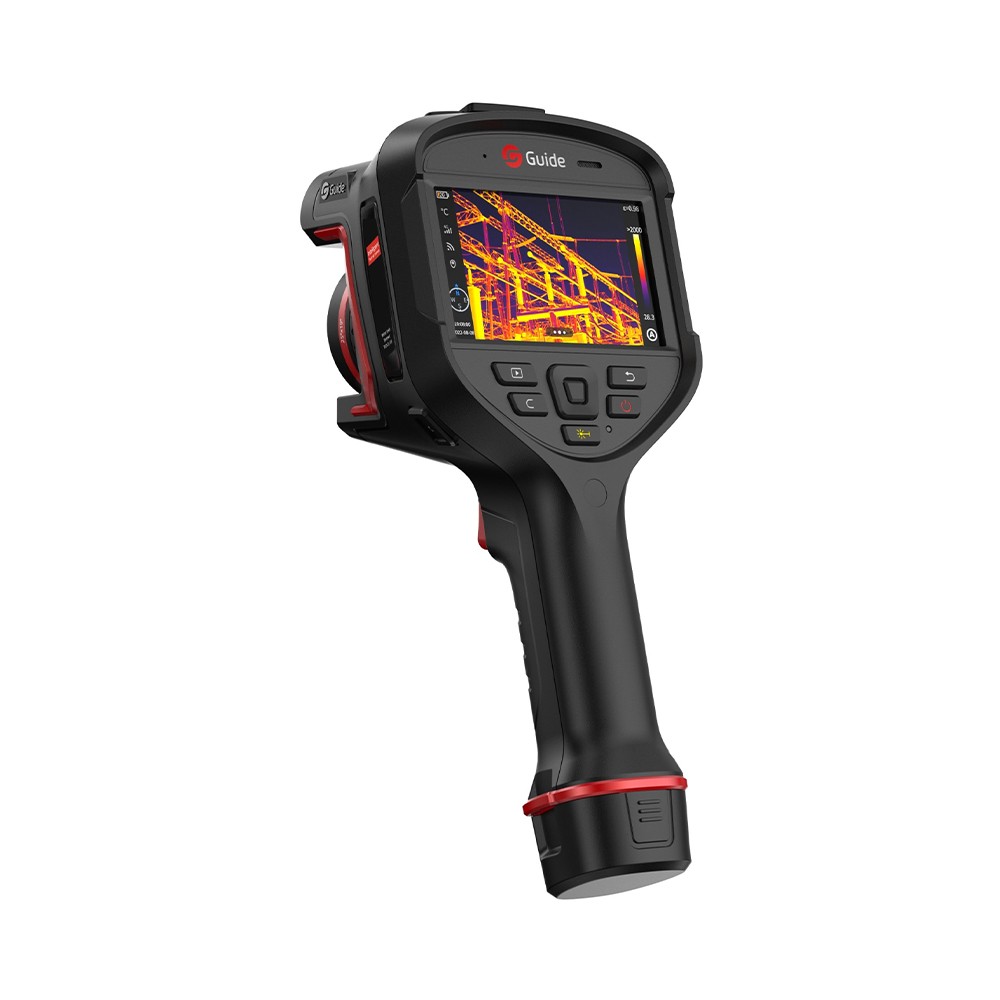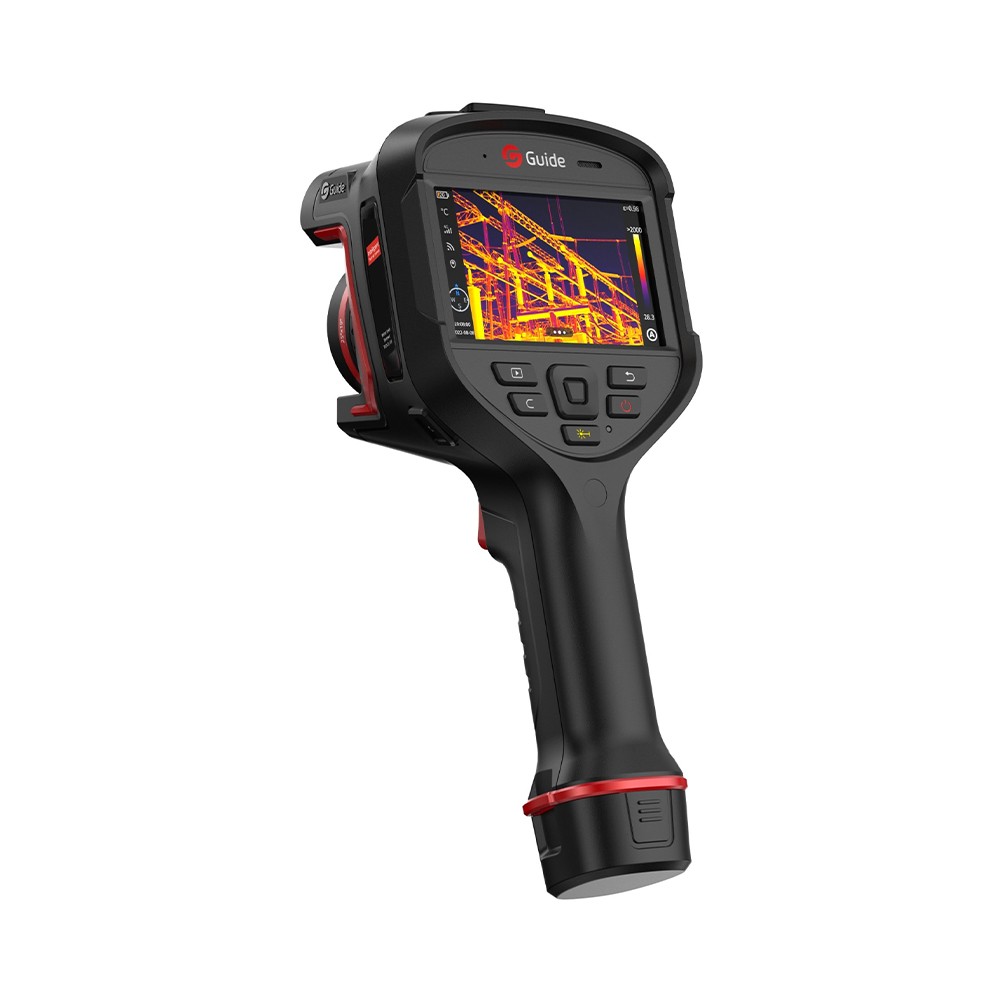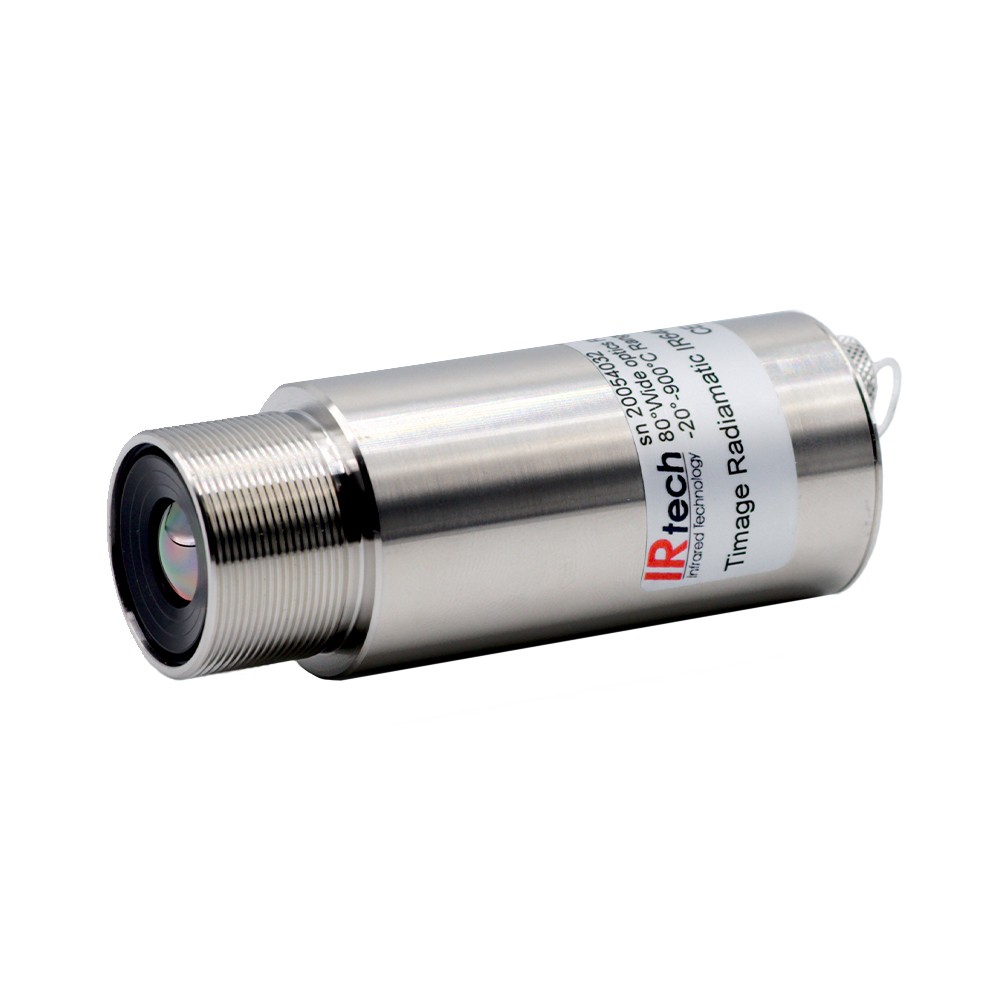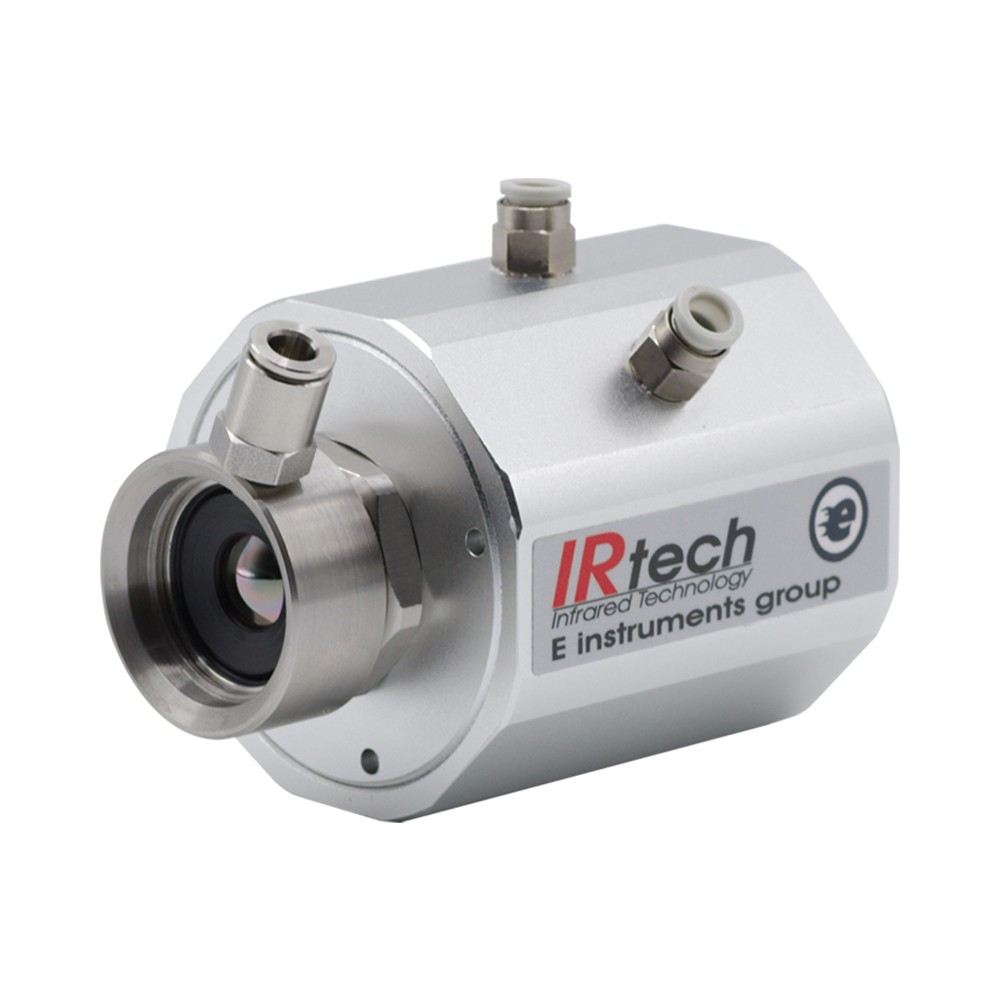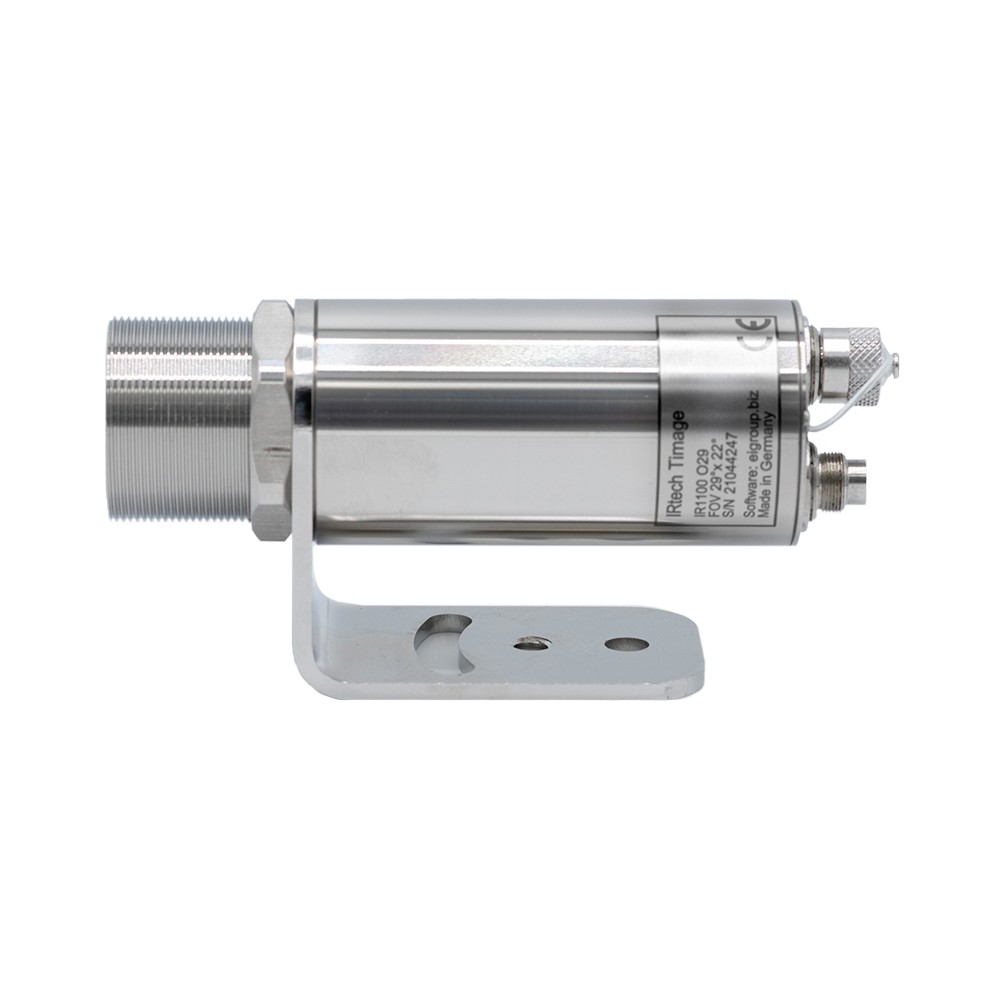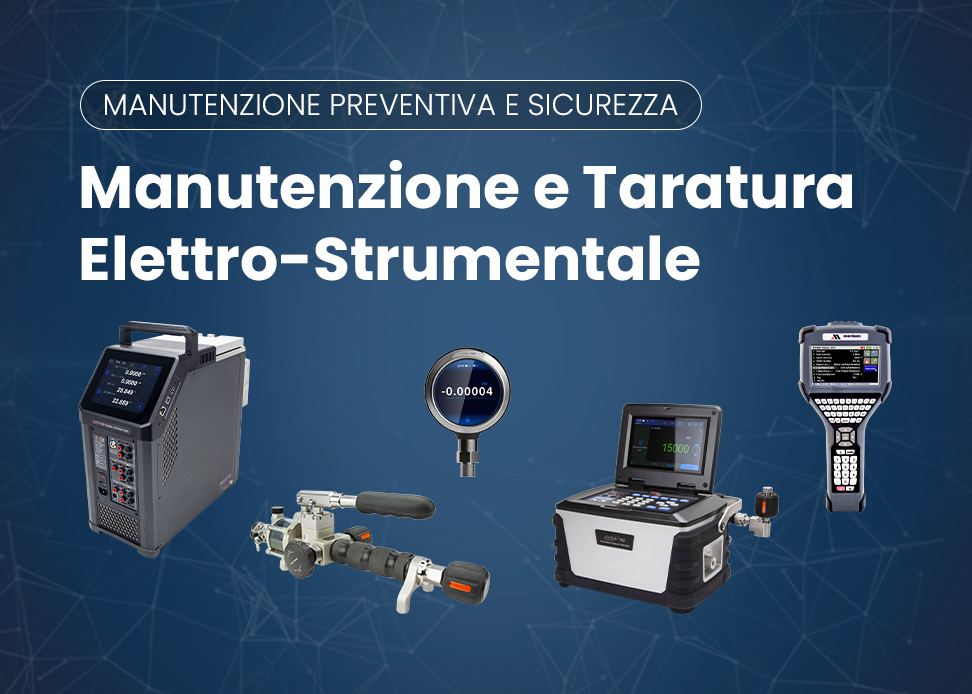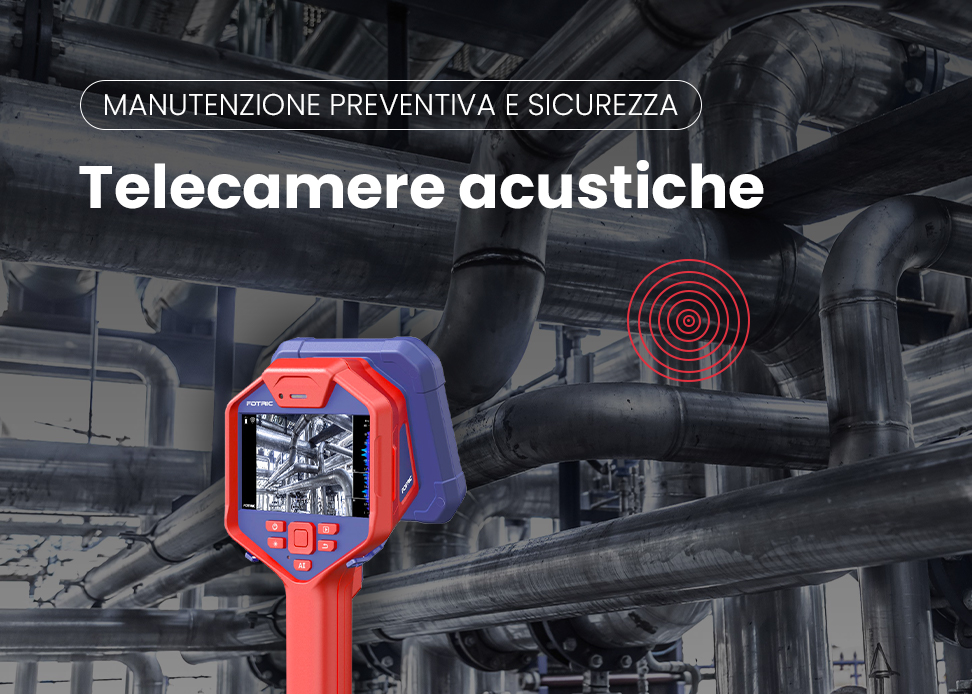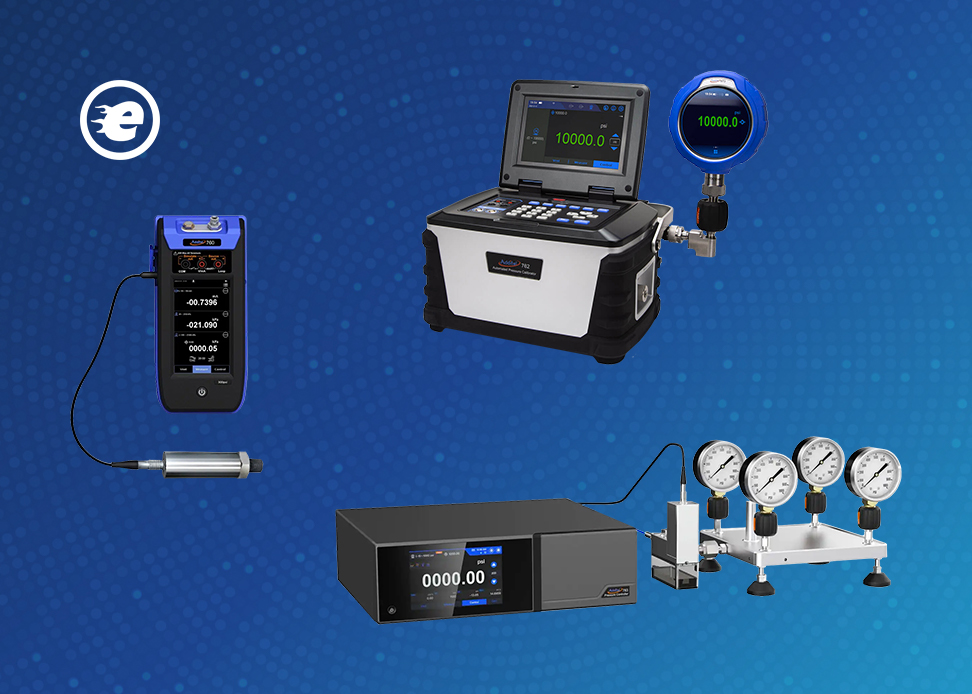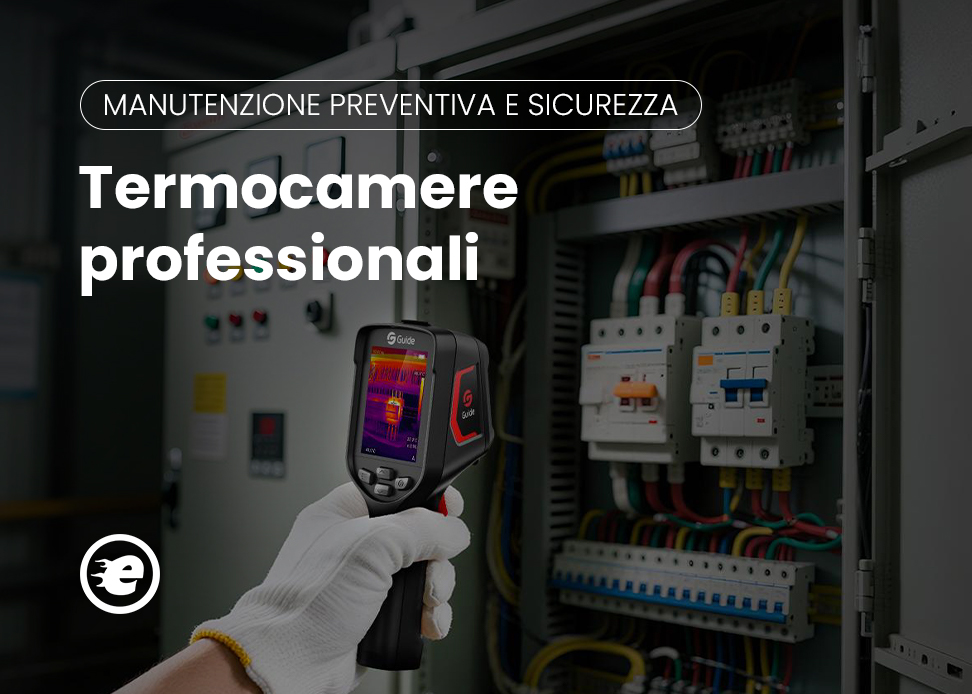
A professional thermal camera is an increasingly widespread instrument in industrial and technical environments, because it allows rapid and precise detection of anomalies invisible to the human eye. Using infrared technology, these devices convert the thermal radiation emitted by objects into easily interpretable images, enabling early identification of abnormal temperature and quick intervention.
Today, the infrared thermal camera is no longer just a niche tool for select sectors: it has evolved into an indispensable ally for predictive maintenance, fire prevention, product quality control, and workplace safety.
What Is a Professional Thermal Camera and How It Works
A professional thermal camera is a device capable of measuring and graphically representing the temperature distribution on a surface or object. Its operation relies on detecting the infrared radiation emitted by bodies: the higher the temperature, the greater the intensity of detected radiation.
This principle allows creation of images called thermograms, which display temperature variations via color gradations. In practice, where the human eye sees nothing, the thermal camera picks out hotspots, leaks, or anomalies.
It’s important to distinguish between a common professional thermal imager and an industrial thermal camera..
The former may be used in general applications (e.g. building inspections or small plant maintenance), while the latter is designed for critical environments, offering greater accuracy, robustness, and advanced thermographic analysis features.
Main Advantages of Using a Professional Thermal Camera
Adopting a professional thermal camera means equipping yourself with an instrument that brings tangible operational and economic benefits. Key advantages include:
- High Precision: it allows detection of thermal anomalies with fine accuracy.
- Intervention Speed: thanks to instantaneous thermographic analysis, technicians can diagnose issues without halting production or disassembling components.
- Cost Reduction: using an industrial thermal camera helps anticipate failures and malfunctions, avoiding costly downtime.
- Enhanced Safety: in sensitive contexts like electrical panel monitoring or battery storage, the thermal camera becomes a fundamental tool for fire prevention, protecting people and structures.
In essence, a thermal camera is not just a measuring device—it is a strategic tool that enables companies to operate more efficiently while minimizing unpredictable issues.
Practical Applications of Thermal Cameras in Various Sectors
The professional thermal camera finds applications across many domains, becoming a transversal tool for maintenance, safety, and quality control. Thanks to infrared technology, it delivers reliable and immediate data, facilitating a proactive approach to issues.
Let’s look at some of the main areas where the industrial thermal camera is now essential.
Inspection and Predictive Maintenance
Predictive maintenance is based on early detection of anomalies that could lead to failures or downtime. With an infrared thermal camera, technicians can monitor motors, bearings, pumps, and systems while they remain operational, without interrupting the production cycle.
Such thermographic analysis enables planning of interventions in advance, reducing unexpected downtime and cutting costs, thereby improving the overall reliability of facilities.
Electrical Panels and Industrial Plant Monitoring
Electrical panels are among the most critical components in an industrial setup. An undetected overheating point may lead to failures, blackouts, or even fires.
Using a professional thermal imager enables detection of hot spots, faulty connections, or overloads before they escalate. This application is now standard in plant maintenance and represents one of the main uses of thermal cameras in industrial environments.
Fire Safety and Risk Prevention
One of the most relevant functionalities of a professional thermal camera is
In production sites, power plants, and combustible material storage facilities, the industrial thermal camera becomes a critical investment to reduce risks, protect people, and safeguard infrastructure.
Lithium Battery Monitoring and Storage
The increasing adoption of lithium-ion batteries has made advanced monitoring systems indispensable. An infrared thermal camera makes it possible to detect temperature variations that may precede dangerous phenomena like thermal runaway (unstable temperature escalation).
Through thermographic analysis, safety managers can intervene quickly, minimizing the risk of fires or explosions in storage hubs.
Waste Storage and Landfill Management
Even in waste repositories and landfills, thermal cameras have found vital use. The fermentation of materials or accumulation of flammable substances can create overheating spots invisible to the eye.
Using a professional thermal camera allows detection of hidden hot spots, significantly reducing the risk of widespread fires and ensuring continuous, safe monitoring of complex areas.
How a Thermal Camera Helps Prevent Damage
One of the strengths of a professional thermal camera is its capacity to anticipate problems, greatly reducing risks and costs associated with failures or accidents. Here are some concrete examples of how this tool is used in practice:
- Detection of overheating: in electrical panels or industrial machines, a hot spot may signal an overload or faulty component. An infrared thermal camera identifies the issue early, preventing further damage.
- Thermal leakage detection: in buildings or industrial systems, heat loss is a hidden cost. Thermographic analysis allows precise mapping of critical areas, improving energy efficiency.
- Fire prevention: deploying an industrial thermal camera in high-risk settings—like combustible material storage or waste sites—allows early recognition of fires and activation of preventive measures.
- Continuous process monitoring: by installing fixed thermographic monitoring systems, you can keep a real-time eye on production processes, ensuring maximum efficiency across machinery and facilities.
In sum, the thermal camera is not just a diagnostic or research tool—it is a prevention system that turns maintenance and monitoring from reactive to proactive.
How to Choose the Right Professional Thermal Camera
Not all thermal cameras are created equal. To obtain reliable results, it’s crucial to carefully evaluate device characteristics based on the application and operational needs. Key factors to consider include:
- Image resolution: the higher the resolution, the more detailed the analysis. A professional thermal imager with sufficient resolution allows detection of even small temperature deviations.
- Temperature range: essential for industrial settings. An industrial thermal camera must cover broad temperature ranges to monitor processes and automations across diverse applications.
- Thermal sensitivity: indicates the camera’s ability to detect minute heat variations. A low NETD (Noise Equivalent Temperature Difference) ensures higher precision and accuracy in thermograms.
- Thermographic analysis software: collected data and images must be easy to interpret and share. Professional models include advanced software for monitoring and custom application programming.
- Durability and reliability: in industrial environments, the camera must remain functional and robust, to operate under difficult and extreme conditions.
- Use case / sector: field technicians may favor portable thermal cameras, while fire prevention, industrial monitoring, or process control may require fixed models, integrated into automation systems.
Selecting the right professional thermal camera ensures reliable measurement—upon which effective decisions and interventions can be based.
Available Products and Solutions
On the market, various types of professional thermal cameras are designed to meet specific needs—from field diagnostics to continuous industrial plant monitoring and automation systems.
Portable Professional Thermal Cameras
Portable thermal cameras are ideal for technicians and operators who need to perform fast, precise inspections directly in the field.
- E4: a compact and “pocketable” thermal camera, perfect for those needing a lightweight yet reliable diagnostic tool.
- H Series: includes advanced models with smart features
- H6: equipped with high resolution and intuitive interface, suitable for professional industrial and research use.
- H3: designed for those who seek a balance between cost and performance.
Fixed Professional Thermal Cameras
Fixed thermal cameras are intended for automation and continuous monitoring, where constant oversight is essential for guaranteeing quality and prevention.
- IR640: ideal for machine builders, automation systems, and fire prevention applications due to its versatility and autonomous operation./li>
- IR1100 XR: designed for R&D, laboratories, or sectors requiring precise thermal analysis with high performance.
- IR1100+ HT: developed for heavy industry, it covers a wide temperature range (up to 1800 °C), ideal for metalworking and high-temperature processes.
Why Invest in a Professional Thermal Camera
Investing in a professional thermal camera means equipping yourself with an effective tool that can make a difference in managing maintenance and process safety. The ability to detect in advance overheating, energy leaks, or anomalies reduces the risk of unexpected failures, increases productive efficiency, and ensures operational continuity.
Whether for predictive maintenance, thermographic analysis for quality control, or fire prevention applications, the infrared thermal camera is, today, a strategic investment for professionals and companies alike.
In an industrial and technological context that continually evolves, relying on a professional thermal imager is no longer optional—it is a conscious choice for those who wish to prevent damage, optimize processes, and protect resources and people.



